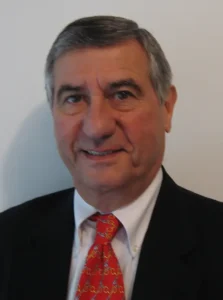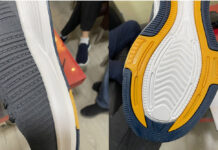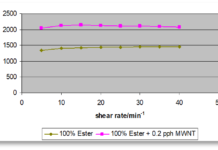Edited by Dianna Brodine, vice president, editorial, UV+EB Technology
 For 40 years, Paul Elias has been a member of RadTech International North America, serving the association in a variety of leadership roles and advancing the industry with his commitment and advocacy. In May, at the 2024 RadTech UV&EB Technology & Conference, Elias was presented with a special service award to recognize his dedication.
For 40 years, Paul Elias has been a member of RadTech International North America, serving the association in a variety of leadership roles and advancing the industry with his commitment and advocacy. In May, at the 2024 RadTech UV&EB Technology & Conference, Elias was presented with a special service award to recognize his dedication.
Tell us about your career.
I began my career as a chemical engineer with Olin Corp., where I spent 10 years, interrupted by one year to obtain my MBA. Then I spent 29 years with Arco/Sartomer in project and business management roles, while also obtaining my JD in 1981 by attending evening classes. For the last 16 years, I have worked with Miwon.
In what ways have you served RadTech?
In 1984, I was promoted to product manager of Sartomer’s UV/EB product line and immediately joined RadTech. I attended my first RadTech (then still a division of AFP/SME) Conference in Baltimore in 1986. That same year, RadTech became an independent organization. We held the first founding members meeting in Cincinnati in December 1986, and I became actively involved in the association by joining the marketing committee and then the board of directors in 1988. In 1991-1992, with David Harbourne, I co-chaired a small strategic team focused on improving the health and performance of RadTech. The outcome of this team’s work dramatically changed the management and direction of the association, aimed at an expansion of the use of UV/EB technology. In 1994, I was elected treasurer for the first time, a position in which I served until elected president in 1998. After my term as president, I returned to help manage the finances of RadTech as treasurer.
How has the technology evolved?
Initially, environmental advantages spurred the growth of UV/EB, and then energy savings became a driving factor. The markets noticed, with rapid acceleration of use in electronics, expansion into UV-cured inks and coatings on telecommunications optical fiber, and then coatings and adhesives for flat screens (computers, TVs, cell phones, etc.). Now, a major interest in 3D printing is about to erupt.
In short, all growth has been driven by economic factors as our technology offers the 5 E’s that boost the end user’s bottom line. These are: environmental compliance (in fact, it exceeds most regulations); energy efficient (less energy required for curing); enabling (i.e., enables the user to print and coat on heat-sensitive substrates); efficiency (can handle products immediately after curing, requiring less inventory) and economical (total applied cost of cured system is less than alternatives).
What are the biggest barriers to further adoption?
In my opinion, bad regulations and misinformation based on incomplete or faulty testing are hampering the industry’s growth. There’s a lack of awareness of the capabilities of our technology by government regulators and potential users, including a misperception of higher costs and a lack of understanding of all the advantages.
How has the changing regulatory environment affected the adoption of curing technologies?
The regulatory environment has both helped and hindered the adoption of curing technologies. In California, where we have a significant presence with Rita Loof, our technology has received favorable adoption by the SCAQMD and others. In Europe, the regulators supported the transition of coil coatings to UV-cured coatings. However, the unilateral adoption of the proven faulty test results of an NTP TMPTA study by IARC, and later by California’s Prop 65, has had a negative impact on the use of TMPTA. And, the long, tedious and expensive process of getting new materials approved for use by the EPA is discouraging. With little to no VOC emissions, our technology clearly offers an environmentally sound solution to cleaner air, and a positive contribution to climate change.
What are the next steps?
The priorities must be public recognition and promotion of the advantages of our technology to governmental officials and leaders of major corporations. RadTech members and users of UV/EB can help by writing letters to their congressional representatives regarding our technology and putting pressure on EPA to streamline and shorten the approval process for the introduction of new materials.
Over the years, I committed a significant amount of time toward the success of RadTech and the growth of the use of UV/EB technology. I praise the founders for taking RadTech from a chapter of the SME to an independent organization and the work of industry volunteers and dedicated staff to build a financially healthy performance group. The effort I put into RadTech was paid back in the friendships I’ve made, hearing praises of the success of RadTech from other organizations, and the business that came to my company as a result – and all on a volunteer basis. With RadTech, there is no doubt that the more effort you put into it, the greater return you get.






